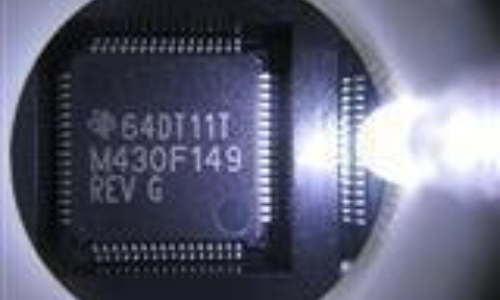Introduction to 7447 Displays
The 7447 is a popular seven segment display driver integrated circuit. It can be used to drive common cathode or common anode seven segment LED or LCD displays. Some key features of the 7447 IC include:
- Decodes BCD inputs into 7 segment outputs
- Comes in 16 pin DIP package
- Can sink 15mA per output segment
- Has active LOW outputs for common cathode displays
- Logic compatible CMOS inputs and outputs
How 7447 ICs Work
The 7447 contains internal logic to convert 4-bit BCD (binary coded decimal) inputs into the corresponding 7 segment outputs needed to display the number.
For example, if the input BCD code is 0011 (hex 3), the 7447 will turn on the correct segments to light up and display a “3” on the connected 7 segment display.
The 16 pins of the 7447 are organized as follows:
| Pin | Name | Description |
|---|---|---|
| 1-7 | a, b, c, d, e, f, g | 7 segment outputs |
| 8 | LT | Lamp test input |
| 9-12 | D0-D3 | BCD inputs |
| 13 | BI/RBI | Blank/Ripple blank input |
| 14 | RBO | Ripple blank output |
| 15-16 | VCC, GND | Power supply |
The 7447 contains an internal multiplexer that selects the correct 7 segment line pattern based on the logic level inputs on pins D0-D3.
Using 7447s in Circuits
7447 ICs are easy to use in circuits driving 7 segment displays:
- Supply 5V power to VCC and connect GND to ground
- Connect the 4 BCD inputs to a microcontroller or other digital logic
- Connect the 7 segment outputs to the corresponding pins on the display
- Include current limiting resistors for each LED segment
- Connect the decimal point LED separately
Here is a simple schematic showing a 7447 driving a common cathode 7 segment display:
The current limiting resistors (R1-R7) are typically between 150-470 ohms depending on the display used.
7447 Variants
There are some other similar 7 segment driver ICs to consider:
- 7446 – Has active HIGH outputs for common anode displays
- 7448 – Has built-in BCD to decimal decoding
- 74249 – Has 24 outputs for driving 4 displays
- MAX7219 – SPI interface LED driver with decoders
So the 7447 is a versatile choice for driving single 7 segment displays from digital logic or microcontrollers.
Frequently Asked Questions
What is the difference between common anode and common cathode displays?
- Common cathode displays have all the cathodes of each segment connected together to ground. The anodes for each segment are controlled individually.
- Common anode displays have all the anodes connected together to +V. The cathodes are controlled individually to turn segments on.
How much current can the 7447 sink/source per output?
- The 7447 can sink up to 15mA per output segment with a maximum total device current of 110mA. Sourcing current is very limited.
Can a 7447 directly drive an LCD display?
- Generally no, LCD displays require a higher drive voltage (5-12V) than the 7447 can provide. An interface circuit or driver chip would be required.
What is the maximum supply voltage for the 7447?
- 7447 ICs can operate from 4.5-5.5V maximum. Pay attention to the absolute maximum ratings. Higher voltages could damage the IC.
How do I control the decimal point on 7 segment displays?
- The decimal point LED is usually wired separately and controlled by a separate microcontroller I/O pin. The 7447 does not control the decimal point.
